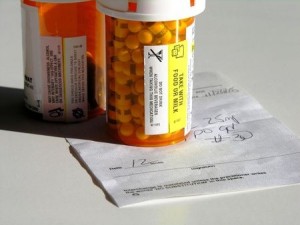Corrupted Clinical Trials
Dr. Jason Fung opened his article, “The Corruption of Evidence Based Medicine—Killing for Profit” with the following: “The idea of Evidence Based Medicine (EBM) is great. The reality, though, not so much.” He said if the evidence base was false or corrupted, then evidence-based medicine was completely worthless. “It’s like building a wooden house knowing the wood is termite infested.” He’s not alone in this opinion and he quoted three current or former editors of the two most prestigious medical journals in the world who corroborated his statement.
Richard Horton, editor in chief of The Lancet said: “The case against science is straightforward: much of the scientific literature, perhaps half, may simply be untrue.”
Dr. Marcia Angell, former editor in chief of the New England Medical Journal (NEJM) said: “It is simply no longer possible to believe much of the clinical research that is published, or to rely on the judgment of trusted physicians or authoritative medical guidelines. I take no pleasure in this conclusion, which I reached slowly and reluctantly over my two decades as an editor.”
Dr. Arnold Relman, the former editor of the NEJM, said: “The medical profession is being bought by the pharmaceutical industry, not only in terms of the practice of medicine, but also in terms of teaching and research. The academic institutions of this country are allowing themselves to be the paid agents of the pharmaceutical industry. I think it’s disgraceful.”
Dr Fung said: “Physicians and universities have allowed themselves to be bribed.” He went on to say the examples in medicine are everywhere. For instance, medical research is typically paid for by pharmaceutical companies. “Trials run by industry are 70% more likely than government funded trials to show a positive result.” Among the issues he described were: the selective publication of clinical trials, rigging the outcomes of those trials, publication bias and industry payments to medical journals and their editors.
Clinical trials with negative results are likely to be suppressed. Using the company Sanofi to illustrate the problem, Dr. Fung noted the company completed 92 studies in 2008, but only published the results of 14. He acknowledged how it would be financial suicide to publish data that would harm your company. “But knowing this, why do we still believe the evidence based medicine, when the evidence base is completely biased?”
With antidepressants, a review of the published literature published in the NEMJ suggested 94% of the trials conducted were positive. Among FDA-registered trials, 31% were not published and only 51% showed positive results. The authors said:
We cannot determine whether the bias observed resulted from a failure to submit manuscripts on the part of authors and sponsors, from decisions by journal editors and reviewers not to publish, or both. Selective reporting of clinical trial results may have adverse consequences for researchers, study participants, health care professionals, and patients.
Before the year 2000, pharmaceutical companies doing clinical trials did not have to declare beforehand what their primary outcomes would be. So they would “measure many different endpoints and simply figured out which one looked best and then declared the trial a success.” The government changed that requirement and after 2000, 8% of clinical trials showed good results when 57% of those before 2000 showed a positive result. Evidence of the evidence base was being corrupted by commercial interest.
If a journal publishes a positive article about a Pharma drug, the company would order several hundred thousand copies of the article to distribute to doctors in their marketing efforts. “It’s insanely profitable for journals to take money from Big Pharma.” The NEMJ gets 23% of its income from reprints; the Lancet gets 41%; and the American Medical Association gets 53%! “No wonder these journals are ready to sell their readers (ordinary physicians) down the river. It pays.” A cited study noted where 50.9% of the editors of prestigious medical journals received at least some payments from the industry, and in some cases “these payments were often large.”
We found that industry payments to journal editors are common and can be substantial. Moreover, many journals lack clear and transparent editorial conflicts of interest policies and disclosures. Given our findings, we would suggest that journals take several steps. Firstly, we would strongly argue that all journals should develop and implement a transparent, publicly accessible editorial conflicts of interest policy. Secondly, editors in chief should consider excluding those with considerable industry relations from editorial positions. While such a stance could be considered drastic, editors play a crucial role in research integrity; even an appearance of conflict can serve to undermine the clinical research enterprise.
In The Chronicle of Higher Education, Batt and Fugh-Berman noted where “Disclosing Corporate Funding Is Not Nearly Enough.” In the U.S. in 2015, industry spent $102.7 billion on health-related research, while federal agencies spent $35.9 billion. “The current administration attempted to further decrease NIH funding, but those efforts were unsuccessful.” They said reliance on industry money limits the scope of research; and “it weakens researchers’ ability to act as independent critics.” Pharmaceutical companies fund, publish and promote studies that that are favorable to their marketing goals and “suppress or attack research that threatens market share.”
Perhaps most troubling is that if the final results of a study do not support commercial goals, the full study may never be published. In general, industry-funded studies are less likely to be published than non-industry-funded ones. And contrary to expectations, the reason negative studies are unpublished is not because journals rejected them, but because they were never submitted for publication. Although many universities frown on agreements that give funders the right to suppress the publication of findings, policies regarding publishing are not uniform across colleges and universities. In any case, enforcement is nil: Colleges can’t force researchers to publish studies. Industry insiders tell us that when company representatives fail to prevent a researcher from publishing unfavorable results on a drug, they may attempt to persuade the researcher to “bury” the paper in an obscure journal. Or, under the guise of reviewing a manuscript for “accuracy,” a company may soften statements or insert subtle marketing messages into the article to mitigate harm to its marketing goals. We don’t know the extent to which industry funding distorts biomedical literature — and clinical decision-making — but a substantial body of evidence now shows that allowing industry to choose what scientific questions should be asked, and how findings should be analyzed, interpreted, and disseminated, has public-health costs. We need strategies to minimize industry influence on scientific questions, and the resulting impact on policies and medical practice.
Writing for Mad in America, Zenobia Morrill summarized a review article by three researchers, “Industry-corrupted psychiatric trials.” The authors quoted from Marcia Angell’s 2008 article for JAMA, “Industry-sponsored clinical research: A broken system,” where she said:
Over the past 2 decades, the pharmaceutical industry has gained unprecedented control over the evaluation of its own products. Drug companies now finance most clinical research on prescription drugs, and there is mounting evidence that they often skew the research they sponsor to make their drugs look better and safer.”
Amstersdam, McHenry and Jureidini, the authors of “Industry-corrupted psychiatric trials,” noted it was common knowledge that pharmaceutical companies “laundered” their promotional efforts through medical communications companies that “ghostwrite articles and then pay academic consultants to sign on to the fraudulent articles.”
The firms set up advisory board meetings with key opinion leaders and marketing executives in advance of the clinical trials. Once a trial is complete, the medical ghostwriter who is employed by the medical communications firm produces a draft of a manuscript – from a summary of the Final Study Report of the clinical trial – and seeks feedback from the corporate sponsor. It is at this stage in the manuscript production that misrepresentation of the trial data frequently occurs, since the medical ghostwriter is under the direction of marketing executives to “spin” the data. The medical ghostwriter then revises a number of drafts with input from the external academic “authors” and internal industry scientists, and once the corporate sponsor is satisfied that the final manuscript draft is “on message,” it is submitted by a corporate-designated lead author to a medical journal for peer review. Once the manuscript is submitted, the medical ghostwriter disappears or is acknowledged in the fine print for “editorial assistance.”
As a result, ghostwriting by the pharmaceutical industry has become a major factor in the “crisis of credibility” in academic medicine. “The integrity of science depends on the trust placed in individual clinicians and researchers and in the peer-review system which is the foundation of a reliable body of knowledge.” If academics allow their names to appear on ghostwritten articles, “they betray this basic ethical responsibility and are guilty of academic misconduct,” according to Amstersdam, McHenry and Jureidini. Ghostwriting extends to include an academic façade for research “that has been designed, conducted and analyzed by industry.” Yet the vast majority of ghostwritten publications won’t be revealed as such.
Key opinion leaders (KOLs) or “thought leaders” are academic physicians who are carefully vetted by the industry on the basis of their receptivity to the sponsor’s products. Pharmaceutical companies say they have engaged these KOLs for expert evaluation and feedback on marketing strategy. However, they essentially are highly paid “product champions” or marketers. “Few physicians and psychiatrists can resist the flattering offer by industry to become KOLs.” Medical journals are noted to be part of the problem here as well.
Medical journals are part of the problem rather than the solution to the problem. Instead of demanding rigorous peer review of a submissions and an independent analysis of the data, medical journal editors are pressured to publish favorable articles of industry-sponsored trials and rarely publish critical deconstructions of ghostwritten clinical trials. As medical journals and their owners have become dependent upon pharmaceutical revenue, the journals fail to adhere to the standards of science. Thus the publication of “positive” studies showing drug safety and effectiveness means more pharmaceutical advertising and more orders of reprints for dissemination by the sales force. In contrast, a “negative” study showing poor tolerability or ineffectiveness results in no such revenue.
“Industry-corrupted psychiatric trials” then went on to deconstruct how three studies, “SmithKline Beecham Paroxetine Study 329,” “Forest Laboratory Citalopram Study CIT-MD-18” and “SmithKline Beecham Paroxetine Study 352” all manipulated or misrepresented outcome data. The first two to support the use of the SSRI antidepressants paroxetine (Paxil) and citalopram (Celexa) for the treatment of childhood and adolescent depression. The third study, “Paroxetine Study 352,” misrepresented and manipulated outcome data in adults diagnosed with bipolar affective disorder. Morrill said: “Misconduct of this study was revealed when academics filed complaints of plagiarism and research misconduct against KOLs at medical research universities across the U.S. as well as pharmaceutical company executives.” Read the review article for further details on how these three research studies were deconstructed to reveal how they manipulated or misrepresented outcome data.
In closing, let me remind you again of the opinion of Marcia Angell, former editor of the NEMJ:
It is simply no longer possible to believe much of the clinical research that is published, or to rely on the judgment of trusted physicians or authoritative medical guidelines. . . . Drug companies now finance most clinical research on prescription drugs, and there is mounting evidence that they often skew the research they sponsor to make their drugs look better and safer.


